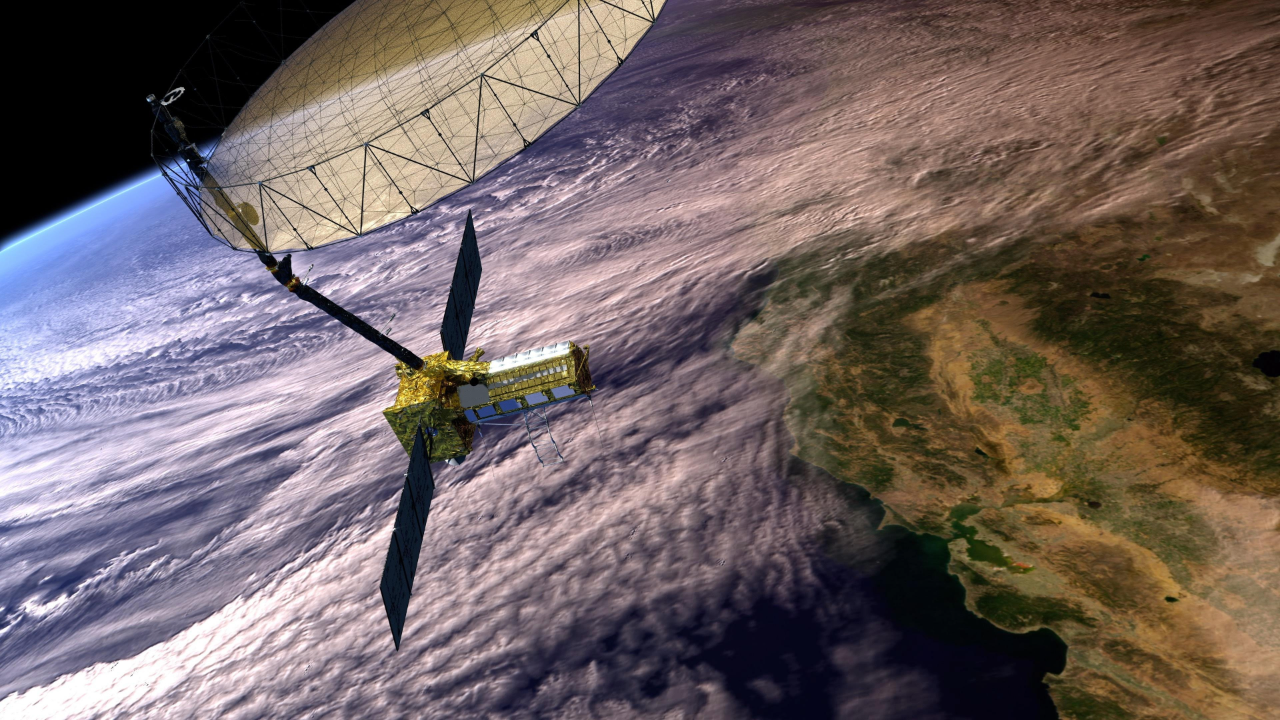Science
India and NASA Set to Launch Advanced Earth-Observing Satellite NISAR

A significant milestone in space exploration is set to occur on July 30, 2024, when the Indian Space Research Organization (ISRO) and NASA will launch the NISAR satellite. This advanced Earth-observing satellite aims to enhance global understanding of environmental changes. The launch will take place at the Satish Dhawan Space Centre in Sriharikota, India, with liftoff scheduled for 8:10 a.m. EDT (12:10 GMT; 5:40 p.m. India Standard Time).
The Geosynchronous Satellite Launch Vehicle Mark II (GSLV Mk II) has been transported to the launch pad, marking the beginning of final preparations for this important mission. The GSLV Mk II, standing nearly 170 feet (52 meters) tall, is India’s largest expendable rocket and features three stages. The first stage is a robust 138-ton solid rocket, supported by four liquid-fueled boosters. The rocket’s second stage employs a hypergolic liquid-propelled Vikas engine, while the third stage utilizes the Indian-developed Cryogenic Upper Stage (CUS) to achieve orbital circularization.
NISAR is described by NASA’s Director of Earth Science, Karen St. Germain, as “the most sophisticated radar we have ever built.” The satellite will utilize synthetic aperture radar technology to measure changes on Earth with precision, detecting variations as small as a centimeter. According to the mission description, NISAR will image land, ice, and select areas of the ocean’s surface every 12 days.
Potential Impact of NISAR’s Data
The data collected by NISAR will have far-reaching implications for understanding and managing natural and human-induced changes on the planet. St. Germain has explained that the satellite will help monitor precursors to natural disasters such as earthquakes, landslides, and volcanic activity. Furthermore, it will provide insights into human activities, including agricultural production, water usage for drinking and irrigation, and development of infrastructure such as housing, railroads, and highways.
“This mission will put NISAR science and observations to work,” St. Germain stated. “Our aim is to guide and inform decisions that will help us feed our populations, construct safe housing and transportation systems, and better prepare for and respond to natural hazards.”
NISAR is expected to be deployed approximately 18.5 minutes after liftoff, reaching a circular polar orbit at an altitude of 464 miles (747 kilometers). The mission is projected to last at least five years, offering an unprecedented opportunity for ongoing Earth observation.
This collaboration between ISRO and NASA reflects a commitment to harnessing technology for the betterment of society and the environment. The NISAR project underscores the importance of international partnerships in advancing scientific knowledge and addressing global challenges. As the countdown to launch continues, anticipation grows for the insights NISAR will provide into our planet’s dynamic systems.
-

 Technology5 months ago
Technology5 months agoDiscover the Top 10 Calorie Counting Apps of 2025
-

 Technology3 weeks ago
Technology3 weeks agoOpenAI to Implement Age Verification for ChatGPT by December 2025
-

 Health3 months ago
Health3 months agoBella Hadid Shares Health Update After Treatment for Lyme Disease
-

 Health3 months ago
Health3 months agoAnalysts Project Stronger Growth for Apple’s iPhone 17 Lineup
-

 Health4 months ago
Health4 months agoErin Bates Shares Recovery Update Following Sepsis Complications
-

 Technology5 months ago
Technology5 months agoDiscover How to Reverse Image Search Using ChatGPT Effortlessly
-

 Technology3 months ago
Technology3 months agoElectric Moto Influencer Surronster Arrested in Tijuana
-

 Technology5 months ago
Technology5 months agoMeta Initiates $60B AI Data Center Expansion, Starting in Ohio
-

 Technology2 months ago
Technology2 months agoDiscover 2025’s Top GPUs for Exceptional 4K Gaming Performance
-

 Technology5 months ago
Technology5 months agoRecovering a Suspended TikTok Account: A Step-by-Step Guide
-

 Health5 months ago
Health5 months agoTested: Rab Firewall Mountain Jacket Survives Harsh Conditions
-

 Lifestyle5 months ago
Lifestyle5 months agoBelton Family Reunites After Daughter Survives Hill Country Floods





















